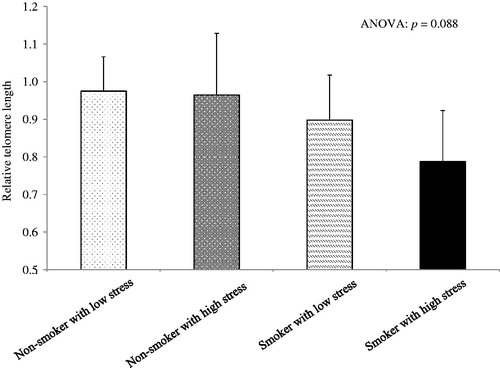Figures & data
Table 1. Characteristics of 89 caregivers of children with disabilities, according to salivary telomere length status.
Figure 1. Scatter plot of age by relative salivary telomere length among 89 caregivers of children with disabilities. Pearson correlation coefficient (log-transformed TL and age): r = −0.29; p = 0.006.

Table 2. Linear and logistic regression models: associations between current smoking and salivary telomere length among 89 caregivers of children with disabilities.
Table 3. Linear and logistic regression models: associations between perceived stress and salivary telomere length among 89 caregivers of children with disabilities.
Figure 2. Means of relative salivary telomere length and standard errors across current smoking and perceived stress groups. As the value of salivary telomere length was not normally distributed, the natural logarithm of salivary telomere length data was transformed. The means of salivary telomere length were presented because these values were more meaningfully interpreted than transformed values. Analysis of variance (ANOVA) was conducted to test the differences in log-transformed TL across current smoking and perceived stress groups.

